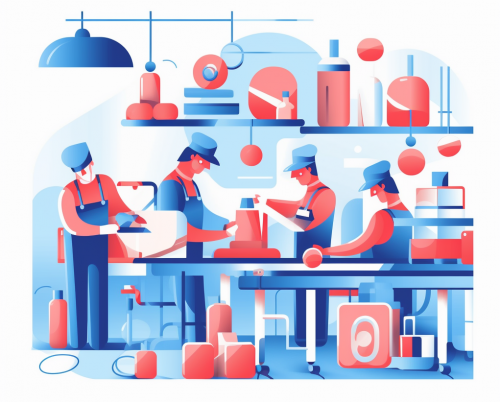Understanding the Basics
Before embarking on the task of setting up your assembly line, it’s absolutely crucial to have a comprehensive understanding of several key factors. These include your product, the manufacturing process, and the production goals. Having a deep and thorough understanding of these elements will provide you with the solid foundation needed to design an assembly line that is not only efficient but also highly effective.
Firstly, understanding your product is paramount. This means knowing the ins and outs of its design, its components, and how they fit together. It’s about understanding the product’s purpose, its unique selling points, and the quality standards it needs to meet. This knowledge will guide you in setting up an assembly line that ensures each product is assembled correctly and to the highest quality standards.
Secondly, a clear grasp of the manufacturing process is essential. This involves understanding the steps required to assemble your product, the tools and equipment needed, and the time it takes for each step. It also means being aware of any potential bottlenecks or issues that could arise during the assembly process. With this knowledge, you can design an assembly line that optimises the manufacturing process, minimising delays and maximising productivity.
Lastly, having clear production goals is vital. These goals could relate to the quantity of products to be produced within a certain timeframe, the level of quality to be maintained, or the cost-effectiveness of the production process. By understanding these goals, you can set up an assembly line that is aligned with them, ensuring that your production process is not only efficient but also meets your business objectives.
Equip Your Assembly Line

When setting up your assembly line, one of the key steps is to equip each workstation with the necessary tools and equipment. This is not just about providing the right tools for the job, but also about arranging them in a way that promotes easy access and optimal ergonomics. By doing so, you can significantly increase productivity and reduce worker fatigue, leading to a more efficient and effective production process.
Firstly, it’s important to identify exactly what tools and equipment are needed at each workstation. This will depend on the specific tasks to be performed at that station and the product being assembled. Once you’ve identified these, make sure each workstation is fully equipped with everything needed to perform its tasks efficiently and effectively.
But equipping each workstation is only half the battle. The arrangement of these tools and equipment is equally important. They should be arranged in a way that allows for easy access, reducing the time workers spend reaching for or searching for tools. This can significantly speed up the assembly process, increasing productivity.
Monitor, Adjust, Improve

The process of setting up an assembly line doesn’t end once it’s operational. It’s crucial to constantly measure and refine the assembly line on an ongoing basis. This continuous improvement approach is key to maintaining efficiency and productivity. By regularly monitoring performance metrics such as production speed, product quality, and worker efficiency, you can identify areas of the assembly line that may need improvement. Refining the assembly line could involve repositioning equipment for better ergonomics, adjusting the workflow to eliminate bottlenecks, or implementing new technologies to enhance productivity. This ongoing process of measurement and refinement ensures that your assembly line remains optimised and adaptable to changing business needs or market conditions, ultimately leading to sustained operational excellence and competitive advantage.








